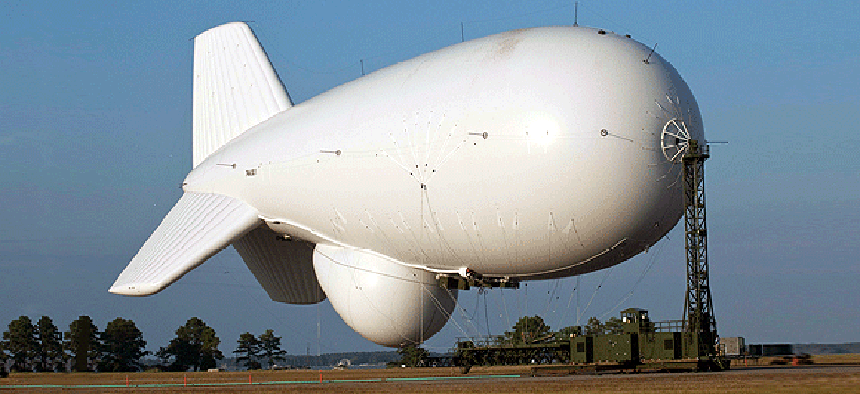Airborne sensor system foils simulated IED attack


Connecting state and local government leaders
The long-range JLENS system, held aloft on tethered aerostats and usually used for missile defense, shows it can keep track of what's going on below, too.
UPDATE: This srticle has been corrected to remove a reference to JLENS' use in Iraq and Afghanistan.
Sometimes old tech is the best solution to a modern problem, or at least old tech that has been given a significant upgrade. That’s the case with the Raytheon Joint Land Attack Cruise Missile Defense Elevated Netted Sensor System (JLENS), which rides to battle on, of all things, a blimp.
The unmanned sensor array is mounted to an aerostat, which is any craft that uses lighter than air buoyancy achieved mostly through gasses, to remain aloft. To the layman’s eye, though, it looks like a blimp, not unlike the barrage balloons seen protecting beachheads and valuable installations from air attack during World War II.
But when equipped with the JLENS system and Raytheon’s Multi-Spectral Targeting System (MTS) family of sensors, it becomes an eye in the sky capable of scanning vast swaths of the landscape, and remaining in position for an entire month if needed. The aerostats hover at up to 10,000 feet and are tethered to the ground.
The ground cable is used to pass on information from the sensors, so it’s a hard wire that really isn’t hackable, especially when compared to a wireless signal. In that respect, the aerostat is almost a perfect platform because it’s quiet, doesn’t consume fuel and doesn’t put anyone’s life at risk if it should crash or come under attack.
JLENS usually is part of a missile defense network, but this week it made news for being able to reliably track targets on the ground. Video from the MTS-B was passed through the aerostat's tether, enabling operators to watch a live feed of trucks, trains and cars from dozens of miles away. There was even smoke from a forest fire in the area, which didn’t obscure the sensors.
As part of the testing, Raytheon employees snuck onto roads within the zone that the JLENS was patrolling, attempting to plant simulated roadside bombs without being detected. According to the company, they were spotted using electro-optical and infrared sensors mounted on the aerostat, and video of what they were doing was passed on to operators.
JLENS aerostats typically work in pairs, with one of the 74-meter aerostats carrying a 360-degree radar and the other a fire-control radar. The system can spot and target threats up to about 342 miles away, Raytheon said.
JLENS is a supporting program of the Army and Joint Integrated Air and Missile Defense.




